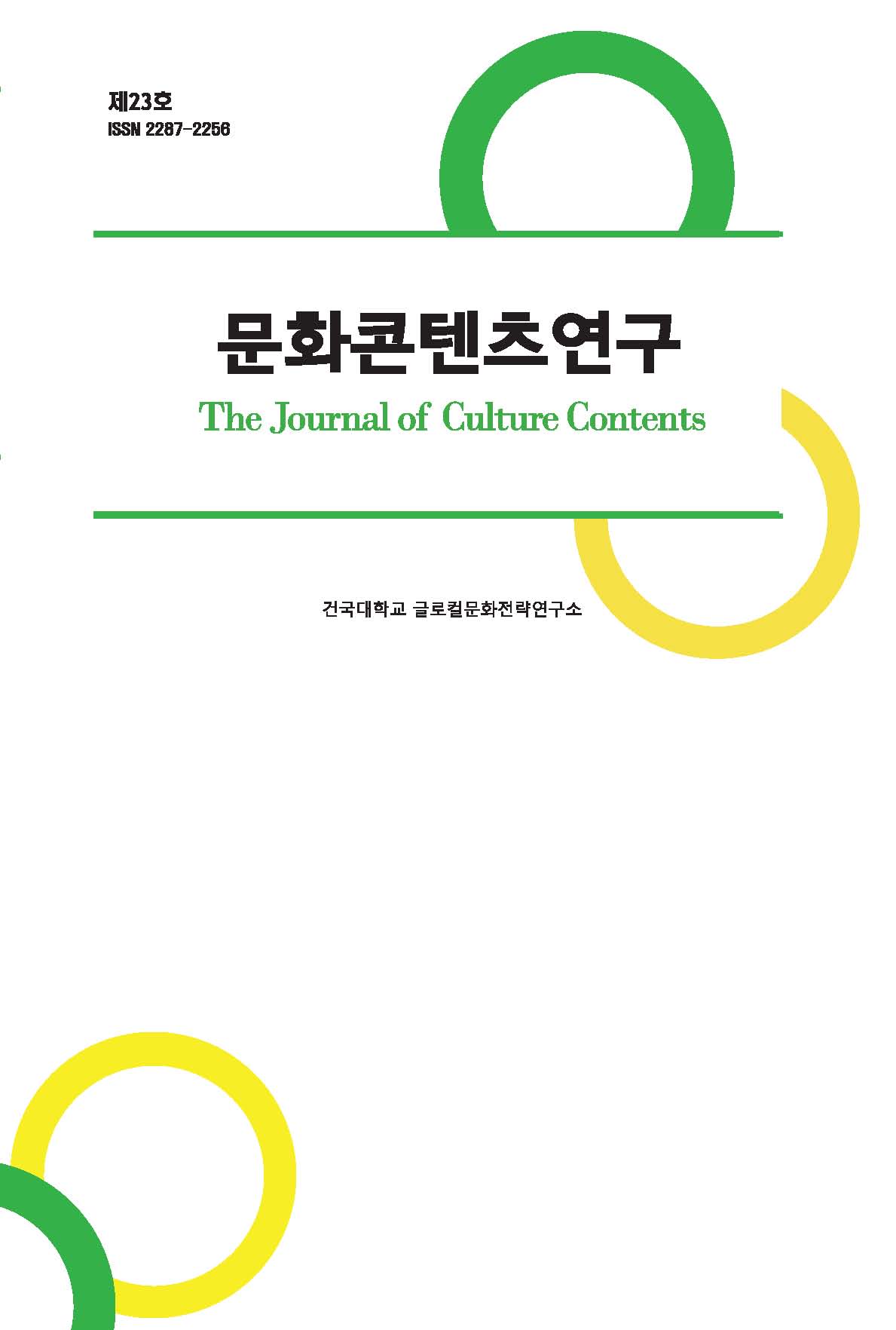Abstract
References
Information
This study utilized the difference-in-differences method to analyze the effect of cultural city designation on visitor inflow. Data were collected from 32 local governments designated as cultural cities, and the effects were estimated using two-way fixed effects and event study methods. The main findings are as follows:
Firstly, no significant effect on the inflow of local and foreign visitors was observed following the cultural city designation. Since cultural cities aim to uncover unique cultural resources and foster urban cultures for citizens’ enjoyment, the lack of noticeable policy effects on the both locals’ and visitors’ movements suggests that the cultural city initiatives might not have been effectively implemented among the general populace. This indicates potential issues with linkage and scalability. Secondly, no significant increase in tourist numbers at tourist sites was found. Although the cultural city initiative is not directly aimed at boosting tourism, the inflow of transient populations such as tourists should be considered an important outcome. This is because visitors to cultural heritage sites or cultural institutions, representing local cultural resources, are counted as tourists if they come from outside the region. This aspect is particularly crucial in areas facing population decline, where the cultural city project could potentially serve as a catalyst for regional revitalization. The lack of observed effects on the inflow of transient populations warrants a thorough review for improvements.
The policy implications suggest that the success metrics of cultural city initiatives should primarily be aligned with officially recognized statistics. These statistics offer reliability and allow for the quantitative analysis of their impacts. It’s also recommended that projects aimed at developing cultural professionals incorporate certified professional training programs to enhance their effectiveness. Additionally, educational programs should extend beyond project conclusion and satisfaction assessments to include comprehensive evaluations of impacts, such as opportunity cost savings, application of learned content, and employment linkages. This approach facilitates easier goal setting and evaluation.
Limitations of this study include its focus solely on the visitor effect and the inability to explore the nuanced differences among cultural cities, partly due to data accessibility constraints. Future research could benefit from analyzing outcomes specific to regional projects or comparing performances across different cohorts or regions.
Firstly, no significant effect on the inflow of local and foreign visitors was observed following the cultural city designation. Since cultural cities aim to uncover unique cultural resources and foster urban cultures for citizens’ enjoyment, the lack of noticeable policy effects on the both locals’ and visitors’ movements suggests that the cultural city initiatives might not have been effectively implemented among the general populace. This indicates potential issues with linkage and scalability. Secondly, no significant increase in tourist numbers at tourist sites was found. Although the cultural city initiative is not directly aimed at boosting tourism, the inflow of transient populations such as tourists should be considered an important outcome. This is because visitors to cultural heritage sites or cultural institutions, representing local cultural resources, are counted as tourists if they come from outside the region. This aspect is particularly crucial in areas facing population decline, where the cultural city project could potentially serve as a catalyst for regional revitalization. The lack of observed effects on the inflow of transient populations warrants a thorough review for improvements.
The policy implications suggest that the success metrics of cultural city initiatives should primarily be aligned with officially recognized statistics. These statistics offer reliability and allow for the quantitative analysis of their impacts. It’s also recommended that projects aimed at developing cultural professionals incorporate certified professional training programs to enhance their effectiveness. Additionally, educational programs should extend beyond project conclusion and satisfaction assessments to include comprehensive evaluations of impacts, such as opportunity cost savings, application of learned content, and employment linkages. This approach facilitates easier goal setting and evaluation.
Limitations of this study include its focus solely on the visitor effect and the inability to explore the nuanced differences among cultural cities, partly due to data accessibility constraints. Future research could benefit from analyzing outcomes specific to regional projects or comparing performances across different cohorts or regions.
본 연구는 문화도시 지정의 효과를 살펴보기 위해 이중차분법을 이용하여 방문객 유입효과를 분석하였다. 이를 위해 문화도시로 지정된 지자체 32곳의 방문객 자료를 수집하였고, 이원고정효과와 이벤트 스터디를 활용하여 효과를 추정하였다. 주요 결과는 다음과 같이 제시된다.
첫째, 문화도시 지정에 따른 현지인 및 외지인 방문객 유입효과는 없는 것으로 나타났다. 문화도시가 지역 고유의 문화자원을 발굴하여 시민들이 향유하는 도시문화를 만든다는 점을 고려할 때, 현지인과 외지인의 다양한 움직임들이 정책적 효과로 나타나지 않았다는 점은 문화도시 사업이 다수 시민들을 대상으로 진행되지 않았을 가능성과 연계와 확장성이 미흡했을 가능성을 시사한다. 둘째, 관광지점의 관광객 유입도 유의미한 결과가 나타나지 않았다. 문화도시 사업은 관광활성화 사업은 아니지만, 관광객과 같은 유동인구의 유입을 성과로써 고려할 필요가 있다. 지역 고유의 문화자원인 문화재나 문화시설의 이용자들은 관외에서 유입되는 경우 관광객으로 통계가 잡히기 때문이다. 특히 인구소멸 지역의 경우 인구감소 위기에 직면하여 지역의 활성화 동력을 문화도시 사업에서 찾는 경우가 있는데, 유동인구 유입 효과가 나타나지 않은 부분은 면밀한 검토를 통해 개선할 필요가 있다.
정책적 시사점은 다음과 같이 제시할 수 있다. 정책 평가를 위한 문화도시의 성과는 무엇보다 국가승인통계와 연계되어야 할 것으로 보인다. 국가승인통계는 정부에서 공식적으로 관리하는 자료이기 때문에 신뢰할 수 있으며, 해당 수치들이 어떠한 파급력을 갖는지 정량적 분석이 가능하기 때문이다. 문화전문인력을 양성하는 사업을 진행하더라도 산업인력공단과 같은 공인된 기관에서 발급하는 자격증 과정을 운영하는 것이 성과로서 효과적이다. 교육사업의 경우도 사업종료하고 만족도 평가에 그치는 것이 아니라 참여자들의 기회비용 절감, 교육 내용의 활용도, 취업연계 등 단계별로 나타나는 성과를 집계하고 영향력을 분석해야 한다. 이러한 과정이 있어야 목표 설정도 용이하고 달성과 평가도 용이하기 때문이다. 문화도시 사업이 지속되고 관련한 성과들에 대한 객관적인 평가가 수행되기 위해서는 필수적이라고 할 수 있다.
연구의 한계로는 방문객 효과에만 초점을 두고 진행된 점과 문화도시들의 세부적인 차이를 살펴보지 못한 점을 들 수 있다. 이는 자료에 대한 접근의 한계이기도 한데 추후 연구에서는 세부 사업별로 관련 성과를 분석하거나 기수별 또는 권역별로 성과가 분석된 연구가 나오길 기대해 본다.
첫째, 문화도시 지정에 따른 현지인 및 외지인 방문객 유입효과는 없는 것으로 나타났다. 문화도시가 지역 고유의 문화자원을 발굴하여 시민들이 향유하는 도시문화를 만든다는 점을 고려할 때, 현지인과 외지인의 다양한 움직임들이 정책적 효과로 나타나지 않았다는 점은 문화도시 사업이 다수 시민들을 대상으로 진행되지 않았을 가능성과 연계와 확장성이 미흡했을 가능성을 시사한다. 둘째, 관광지점의 관광객 유입도 유의미한 결과가 나타나지 않았다. 문화도시 사업은 관광활성화 사업은 아니지만, 관광객과 같은 유동인구의 유입을 성과로써 고려할 필요가 있다. 지역 고유의 문화자원인 문화재나 문화시설의 이용자들은 관외에서 유입되는 경우 관광객으로 통계가 잡히기 때문이다. 특히 인구소멸 지역의 경우 인구감소 위기에 직면하여 지역의 활성화 동력을 문화도시 사업에서 찾는 경우가 있는데, 유동인구 유입 효과가 나타나지 않은 부분은 면밀한 검토를 통해 개선할 필요가 있다.
정책적 시사점은 다음과 같이 제시할 수 있다. 정책 평가를 위한 문화도시의 성과는 무엇보다 국가승인통계와 연계되어야 할 것으로 보인다. 국가승인통계는 정부에서 공식적으로 관리하는 자료이기 때문에 신뢰할 수 있으며, 해당 수치들이 어떠한 파급력을 갖는지 정량적 분석이 가능하기 때문이다. 문화전문인력을 양성하는 사업을 진행하더라도 산업인력공단과 같은 공인된 기관에서 발급하는 자격증 과정을 운영하는 것이 성과로서 효과적이다. 교육사업의 경우도 사업종료하고 만족도 평가에 그치는 것이 아니라 참여자들의 기회비용 절감, 교육 내용의 활용도, 취업연계 등 단계별로 나타나는 성과를 집계하고 영향력을 분석해야 한다. 이러한 과정이 있어야 목표 설정도 용이하고 달성과 평가도 용이하기 때문이다. 문화도시 사업이 지속되고 관련한 성과들에 대한 객관적인 평가가 수행되기 위해서는 필수적이라고 할 수 있다.
연구의 한계로는 방문객 효과에만 초점을 두고 진행된 점과 문화도시들의 세부적인 차이를 살펴보지 못한 점을 들 수 있다. 이는 자료에 대한 접근의 한계이기도 한데 추후 연구에서는 세부 사업별로 관련 성과를 분석하거나 기수별 또는 권역별로 성과가 분석된 연구가 나오길 기대해 본다.
- 강창희․강지원․김성아, 「지역화폐가 지역의 고용에 미치는 영향」, 『노동경제논집』 제45권(제2호), 한국노동경제학회, 2022.
- 강창희․이정민․이석배․김세움, 『관광정책 및 관광사업 프로그램 평가방법 개발』, 문화체육관광부, 2013.
- 곽하율․최명길, 「문화도시 형성 요인이 거주와 방문자의 행동 특성에 미치는 영향」, 『Journal of Information Technology Applications & Management』 제30권(제4호), 한국데이터전략학회, 2023.
- 김명수․김자영, 「국가주도에서 민간자율로」, 『문화산업연구』 제18권(제4호), 한국문화산업학회, 2018.
- 김용호, 「우리나라 문화산업의 경제성장에 대한 기여도에 관한 연구」, 『문화산업연구』 제9권(제2호), 한국문화산업학회, 2009.
- 김은경․변병설, 「문화도시의 충족조건: 인천 남구의 문화환경정책을 중심으로」, 『한국경제지리학회지』 제9권(제3호), 한국경제지리학회, 2006.
- 노수경, 「지역문화실태조사 자료를 통한 1차 문화도시 사업 성과 분석」, 『문화콘텐츠연구』 제24권, 건국대학교 글로컬문화전략연구소, 2022.
- 문화도시심의위원회, 『문화도시 성과관리 가이드라인』, 문화체육관광부, 2021.
- 민인식․최필선, 『STATA 고급통계분석』, 지필미디어.
- 민인식․최필선, 『STATA 패널데이터 분석』, 지필미디어, 2022.
- 박종달, 「문화도시 추진계획의 주요 내용과 의의」, 『건축과 도시공간』, 제30권, 건축공간연구원, 2018.
- 신아름, 「Kingdon의 다중흐름모형(Multiple Streams Framework)을 통해 본 문화도시 사업의 형성과 전개」, 『사회과학연구』 제62권(제3호), 강원대학교 사회과학연구원, 2023.10.22418/JSS.2023.12.62.3.359
- 장세길, 「문화도시의 법적지정을 준비하자」, 『이슈브리핑』 제157호, 전북연구원, 2017.
- 최영화, 「신한류의 형성과 한국사회의 문화변동」, 중앙대학교 대학원 박사학위논문, 2014.
- 추미경․조아영, 『생활문화시설 지원정책 효율화 방안』, 지역문화진흥원, 2018.
- 하혜영․류영아, 「새로운 인구개념인 “생활인구”의 의미와 향후 과제」, 『이슈와 논점』 제2013호, 국회입법조사처, 2022.
- 홍병선, 「문화예술 활동의 가치 생산성에 대한 인문학적 근거」, 『철학탐구』 제43권, 중앙대학교 중앙철학연구소, 2016.
- Angrist, J. D. & Pischke, J.,
Mastering’ Metrics , Princeton University Press, 2015. - Ashenfelter, O. & Card, D., “Using the longitudinal structure of earnings to estimate the effect of training programs”,
The Review of Economics and Statistics 67(4), 1985.10.2307/1924810 - Bianchini, F. & Parkinson, M.,
Cultural Policy and Urban Regeneration: TheWest European Experinece . NY: Manchester University Press, 1993. - Callaway, B. & Sant’Anna, P., “Difference-in-difference with multiple time periods”,
Journal of Economertrics , 225(2), 2021.10.1016/j.jeconom.2020.12.001 - Card, D. & Krueger, A. B., “Minimum wages and employment”,
American Economic Review 84(4), 1994. - Clarke, D. & Tapia-Schythe, K., “Implementing the panel event study”,
The Stata Journal , 21(4), 2021.10.1177/1536867X211063144 - Roth, J., Sant’Anna, P., Bilinski, A. & Poe, J., “What’s trending in difference-in-differences? A synthesis of the recent econometrics literature”,
Journal of Econometrics 235(2), 2023.10.1016/j.jeconom.2023.03.008 - Sun, L. & Abraham, S., “Estimating dynamic treatment effects in event studies with heterogenenous treatment effects”,
Journal of Economertrics , 225(2), 2021.10.1016/j.jeconom.2020.09.006 - 「법정문화도시 ‘폐지’ 대한민국 문화도시 ‘신설’ 혼선」, 『충청타임즈』, 2023년 11월 15일자.
- 관광지식정보시스템 홈페이지, https://know.tour.go.kr
- 문화체육관광부 홈페이지, https://www.mcst.go.kr/kor/main.jsp
- 지역문화진흥원 홈페이지, https://www.rcda.or.kr/home/kor/contents.do?menuCode=13
- 한국관광공사 홈페이지, https://knto.or.kr/index
- 한국관광데이터랩 홈페이지, https://datalab.visitkorea.or.kr/datalab/portal/main/getMainForm.do
- Publisher :Research Institute of Creative Contents
- Publisher(Ko) :글로컬문화전략연구소
- Journal Title :The Journal of Culture Contents
- Journal Title(Ko) :문화콘텐츠연구
- Volume : 30
- No :0
- Pages :63~98
- DOI :https://doi.org/10.34227/tjocc.2024..30.63



 The Journal of Culture Contents
The Journal of Culture Contents





